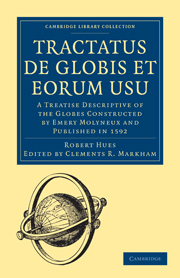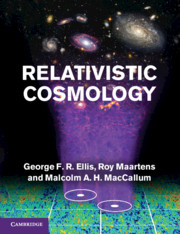Refine listing
Actions for selected content:
16950 results
References
-
- Book:
- Supergravity
- Published online:
- 05 May 2012
- Print publication:
- 05 April 2012, pp 583-601
-
- Chapter
- Export citation
Part VII - Extended N = 2 supergravity
-
- Book:
- Supergravity
- Published online:
- 05 May 2012
- Print publication:
- 05 April 2012, pp 409-410
-
- Chapter
- Export citation
Acknowledgements
-
- Book:
- Supergravity
- Published online:
- 05 May 2012
- Print publication:
- 05 April 2012, pp xvii-xviii
-
- Chapter
- Export citation
21 - The physical N = 2 matter-coupled supergravity
- from Part VII - Extended N = 2 supergravity
-
- Book:
- Supergravity
- Published online:
- 05 May 2012
- Print publication:
- 05 April 2012, pp 469-484
-
- Chapter
- Export citation
Part VIII - Classical solutions and the AdS/CFT correspondence
-
- Book:
- Supergravity
- Published online:
- 05 May 2012
- Print publication:
- 05 April 2012, pp 485-486
-
- Chapter
- Export citation
4 - The Maxwell and Yang–Mills gauge fields
- from Part I - Relativistic field theory in Minkowski spacetime
-
- Book:
- Supergravity
- Published online:
- 05 May 2012
- Print publication:
- 05 April 2012, pp 68-94
-
- Chapter
- Export citation

Tractatus de Globis et Eorum Usu
- A Treatise Descriptive of the Globes Constructed by Emery Molyneux and Published in 1592
-
- Published online:
- 05 April 2012
- Print publication:
- 31 October 2010
- First published in:
- 1889
17 - Construction of the matter-coupled N = 1 supergravity
- from Part V - Superconformal construction of supergravity theories
-
- Book:
- Supergravity
- Published online:
- 05 May 2012
- Print publication:
- 05 April 2012, pp 337-382
-
- Chapter
- Export citation
3 - Clifford algebras and spinors
- from Part I - Relativistic field theory in Minkowski spacetime
-
- Book:
- Supergravity
- Published online:
- 05 May 2012
- Print publication:
- 05 April 2012, pp 39-67
-
- Chapter
- Export citation
15 - Gravity as a conformal gauge theory
- from Part V - Superconformal construction of supergravity theories
-
- Book:
- Supergravity
- Published online:
- 05 May 2012
- Print publication:
- 05 April 2012, pp 307-320
-
- Chapter
- Export citation

Relativistic Cosmology
-
- Published online:
- 05 April 2012
- Print publication:
- 22 March 2012
16 - The conformal approach to pure N = 1 supergravity
- from Part V - Superconformal construction of supergravity theories
-
- Book:
- Supergravity
- Published online:
- 05 May 2012
- Print publication:
- 05 April 2012, pp 321-336
-
- Chapter
- Export citation
Introduction
-
- Book:
- Supergravity
- Published online:
- 05 May 2012
- Print publication:
- 05 April 2012, pp 1-4
-
- Chapter
- Export citation
Part VI - N = 1 supergravity actions and applications
-
- Book:
- Supergravity
- Published online:
- 05 May 2012
- Print publication:
- 05 April 2012, pp 383-384
-
- Chapter
- Export citation
12 - Survey of supergravities
- from Part III - Basic supergravity
-
- Book:
- Supergravity
- Published online:
- 05 May 2012
- Print publication:
- 05 April 2012, pp 236-254
-
- Chapter
- Export citation
Part V - Superconformal construction of supergravity theories
-
- Book:
- Supergravity
- Published online:
- 05 May 2012
- Print publication:
- 05 April 2012, pp 305-306
-
- Chapter
- Export citation
1 - Scalar field theory and its symmetries
- from Part I - Relativistic field theory in Minkowski spacetime
-
- Book:
- Supergravity
- Published online:
- 05 May 2012
- Print publication:
- 05 April 2012, pp 7-24
-
- Chapter
- Export citation
18 - The physical N = 1 matter-coupled supergravity
- from Part VI - N = 1 supergravity actions and applications
-
- Book:
- Supergravity
- Published online:
- 05 May 2012
- Print publication:
- 05 April 2012, pp 385-391
-
- Chapter
- Export citation
Contents
-
- Book:
- Supergravity
- Published online:
- 05 May 2012
- Print publication:
- 05 April 2012, pp v-xiv
-
- Chapter
- Export citation
Part IV - Complex geometry and global SUSY
-
- Book:
- Supergravity
- Published online:
- 05 May 2012
- Print publication:
- 05 April 2012, pp 255-256
-
- Chapter
- Export citation
